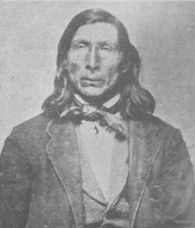Nacisi Tribe
Nacisi Indians. A small tribe, possibly of Caddoan stock, formerly dwelling in the region of Red River, Louisiana. They were first mentioned by Joutel in 1687, at which time they were at enmity with the Cenis (Caddo confederacy). When Bienville and St Denis were exploring Red River of Louisiana, in 1700, they found on that stream a village of the Nacisi consisting of 8 houses. They were still in this neighborhood in 1741, but during the vicissitudes of the 18th century seem to have drifted southward beyond the border of the French province, from 1790 they are mentioned among the … Read more

